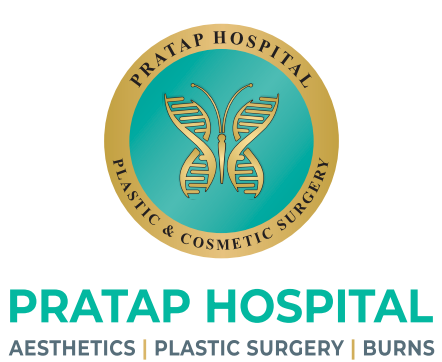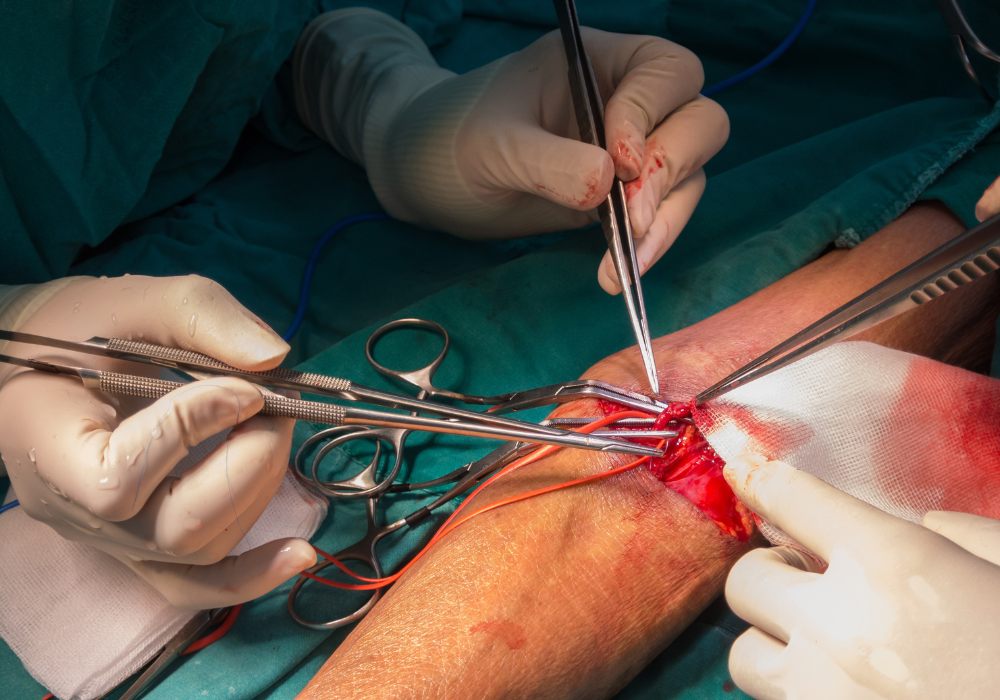
- Home
- About
- Surgical
- Non Surgical
- Burns
- Cranio-maxillofacial surgery
- Gallery
- Contact
Arteriovenous Fistulas — Reliable Vascular Access Through Expert Microsurgical Precision
At Pratap Hospital, Dr. Pratap Duggirala (M.S., M.Ch) provides advanced, reliable, and expertly crafted Arteriovenous (AV) Fistulas for patients requiring long-term dialysis access. With over 15 years of surgical mastery in microvascular surgery, trauma reconstruction, and delicate vessel repair, he is uniquely skilled in creating durable, high-flow AV fistulas with excellent long-term patency rates.
Patients trust Pratap Hospital because Dr. Pratap combines microsurgical expertise, precise vessel handling, and customized planning to deliver fistulas that mature well, function consistently, and support safe, uncomplicated dialysis.
Whether you need a primary AV fistula, revision, or complex re-do procedure, every step is handled with a focus on safety, long-term durability, and patient comfort.

- Overview
- Why People Choose Dr. Pratap for AV Fistula Creation
- Pre-Surgical Evaluation
- Surgical Techniques Used
- The Surgical Process
- Frequently Asked Queries
An Arteriovenous (AV) Fistula is a surgical connection between an artery and a vein—most commonly in the forearm or upper arm—to provide reliable access for dialysis.
Benefits include:
High long-term patency
Lower infection risk compared to catheters
Better blood flow for effective dialysis
Improved patient comfort
Reduced complications
AV fistulas are the gold standard for patients undergoing long-term hemodialysis.
Because they require delicate vascular handling and microsurgical precision, the expertise of a surgeon like Dr. Pratap, trained in advanced microvascular techniques, plays a critical role in success.
✓ Microvascular Specialist with High Surgical Precision
Dr. Pratap’s extensive experience in arterial and venous repair, anastomosis suturing, and delicate vessel work ensures:
Strong, reliable fistula connections
Faster maturation
Lower chance of failure
✓ Excellent Patency & Maturation Rates
His techniques ensure:
Stable blood flow
Thick, healthy vein walls over time
Long-lasting access for dialysis
✓ Customized Fistula Planning
Each fistula is tailored to:
Patient anatomy
Dominant hand
Vessel quality
Dialysis needs
✓ Expertise in Complex & Revision Cases
Ideal for patients with:
Previous failed fistulas
Poor veins
Scarred tissue
Diabetes or vascular disease
✓ Comprehensive Vascular & Postoperative Care
The hospital provides continuous follow-up to ensure proper maturation and long-term function.
✔ Vascular Assessment
Palpation of pulses
Evaluation of vein quality
Allen’s test
Assessment of vessel diameter and elasticity
✔ Doppler or Ultrasound Mapping
To determine:
Best artery–vein pair
Location with highest success
Flow rates and vessel health
✔ Patient Condition Evaluation
Including:
Kidney function status
Co-existing medical conditions
Dominant hand preference
Future dialysis needs
✔ Surgical Planning
Selecting the ideal AV fistula type:
Radiocephalic (wrist)
Brachiocephalic (elbow)
Basilic vein transposition
• Radiocephalic AV Fistula (Wrist)
First choice when vessels are suitable; long-lasting and low complication risk.
• Brachiocephalic AV Fistula (Elbow)
Preferred for larger patients or when wrist veins are weak.
• Basilic Vein Transposition
For deep veins that need repositioning closer to the skin surface.
• AV Graft (in select cases)
Used when native veins are inadequate.
• Revision Surgery / Thrombosis Management
Ideal for restoring failed or blocked fistulas.
• Microsurgical Anastomosis
Ultra-fine suturing under magnification; ensures precise artery-vein connection.
Step 1: Preparation
Mapping vessels
Marking incision sites
Local or regional anesthesia
Step 2: Creating the Fistula
Exposing artery and vein
Precise microsurgical connection (anastomosis)
Ensuring optimal flow
Checking thrill (vibration) immediately
Step 3: Wound Closure
Fine suturing for minimal scarring
Dressing application
Step 4: Post-Operative Care & Monitoring
Hand elevation
Avoiding pressure on the fistula
Regular checks for thrill and flow
Ultrasound follow-up if required
Step 5: Fistula Maturation
Most fistulas mature within 4–8 weeks, depending on vessel quality and patient health.
1. How long does an AV fistula last?
Years—many last 5–10+ years when expertly created and well maintained.
2. When can it be used for dialysis?
Usually after 4–8 weeks of maturation, depending on growth and flow.
3. Is the surgery painful?
It is done under local or regional anesthesia with minimal discomfort.
4. What if my veins are weak?
Alternative techniques like basilic transposition or AV grafts can still provide good access.
5. Can an AV fistula fail?
Yes, but early detection and revision surgery by an expert like Dr. Pratap can restore function.
6. Is it safe for elderly or diabetic patients?
Yes, with proper evaluation. Many patients with co-morbidities successfully undergo AV fistula creation.
.
Book a Consultation
If you’re considering rhinoplasty for aesthetic enhancement or breathing improvement, schedule a consultation at Pratap Hospital today.
Our team will guide you through every step — from evaluation and planning to surgery and recovery — ensuring safe, effective, and natural results.
📍 Pratap Hospital — Reconstructive, Aesthetic & Microsurgery Centre
📞 Call / WhatsApp: +91 94929 69899
📧 Email: drpratapshospital@gmail.com

Before And After Results















